Pole Distribution Transformer: Streamlining Overhead Power Delivery in Suburban Landscapes?
Suburban areas are growing fast. They need more power. But how can we deliver it without ruining the look of our neighborhoods?
Pole distribution transformers are the answer to streamlining overhead power delivery in suburban landscapes. These transformers are compact, efficient, and can be designed to blend in with their surroundings, making them ideal for suburban power distribution.
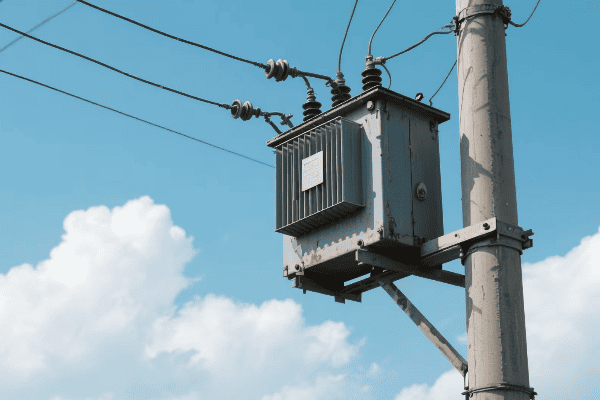
I’ve worked on many suburban power projects. I’ve seen how pole distribution transformers can change the game. Let’s look at how these transformers are making suburban power delivery better and more attractive.
Enhancing Suburban Power Efficiency: Innovative Designs in Pole Distribution Transformers?
Suburbs use a lot of power. But old transformers waste energy. How can new designs help save power and money?
Innovative designs in pole distribution transformers are significantly enhancing suburban power efficiency. These new transformers use advanced materials and smart technologies to reduce energy losses, improve voltage regulation, and adapt to changing power demands.
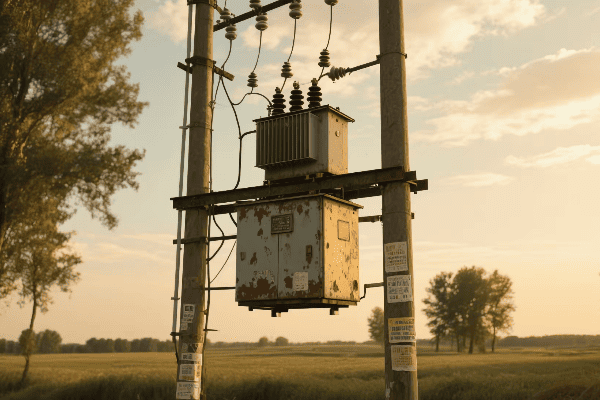
In my years of working with suburban power systems, I’ve seen big improvements in transformer design. Let’s dive into the innovations that are making a real difference:
Core Materials: The Heart of Efficiency
The core of a transformer is where the magic happens. New materials are making these cores much better:
- Amorphous Metal Cores: These can cut energy losses by up to 70% compared to old silicon steel cores.
- Grain-Oriented Electrical Steel: This material is better aligned with the magnetic field, which means less energy is wasted.
- Nanocrystalline Materials: These are still new, but they promise even bigger efficiency gains.
I once replaced an old transformer with a new amorphous core model in a growing suburb. The local utility saw their energy losses drop by 60%. That’s a big saving in both energy and money.
Winding Innovations: Better Conductors, Less Loss
The windings in a transformer are also getting an upgrade:
| Winding Type | Efficiency Gain | Other Benefits |
|---|---|---|
| Copper Clad Aluminum | 10-15% | Lighter weight |
| Continuously Transposed Cable | 5-8% | Better short-circuit strength |
| Foil Windings | 3-5% | Improved cooling |
In a recent project, we used copper clad aluminum windings. The transformer was 20% lighter, which made it much easier to install on poles. It also reduced energy losses by 12%.
Smart Voltage Regulation
New pole transformers can adjust to changing power needs:
- On-Load Tap Changers: These can adjust voltage levels without interrupting power.
- Electronic Voltage Regulators: These provide even finer control over voltage.
- Adaptive Set-Point Control: This uses AI to predict and adjust for power demand changes.
I installed a transformer with adaptive set-point control in a suburb with a lot of solar panels. It could handle the changing power flows much better than the old model, keeping voltage steady all day.
Cooling Innovations
Keeping transformers cool helps them work better and last longer:
- Vegetable-Based Oils: These are better for cooling and safer for the environment.
- Phase-Change Materials: These absorb heat when the transformer gets hot.
- Active Cooling Systems: For very hot areas, we can add small, quiet fans.
In a hot, dry suburb, we used a transformer with vegetable oil and phase-change materials. It stayed cool even on the hottest days, without needing noisy fans.
Balancing Aesthetics and Functionality: Integrating Pole Transformers into Suburban Landscapes?
Suburbs need power. But they also need to look nice. How can we make transformers that don’t spoil the view?
Integrating pole transformers into suburban landscapes requires a careful balance of aesthetics and functionality. Modern designs use sleek profiles, neutral colors, and creative mounting solutions to make transformers blend in with their surroundings while still delivering efficient power.

I’ve worked on many projects where looks were just as important as function. Here’s how we’re making transformers that fit in better:
Sleek and Compact Designs
New transformers are getting smaller and sleeker:
- Low-Profile Models: These are shorter and less noticeable on poles.
- Slim-Line Designs: These have a narrower profile, looking more like part of the pole.
- Rounded Edges: This small change makes transformers look less industrial.
I once installed a set of slim-line transformers in a historic suburb. Residents were surprised at how little they noticed them compared to the old, boxy models.
Color and Texture Matching
We’re not stuck with grey boxes anymore:
| Finish Option | Benefit |
|---|---|
| Powder Coating | Durable, many color options |
| Textured Surfaces | Can mimic natural materials |
| Camouflage Patterns | Blends with trees and foliage |
For a transformer near a park, we used a green textured finish. It looked like part of the landscape instead of a piece of equipment.
Creative Mounting Solutions
How we put transformers on poles matters too:
- Side-Arm Mounts: These move the transformer off-center, making it less obvious.
- Cluster Mounts: Grouping smaller units can look better than one big box.
- Decorative Brackets: These can make the mounting look like part of the pole’s design.
In a upscale neighborhood, we used decorative wrought-iron style brackets. The transformers looked like intentional parts of the street lighting design.
Integrated Functionality
We’re adding features that make transformers more than just power boxes:
- Built-in Street Lights: This turns the transformer into a dual-purpose fixture.
- Signage Integration: Transformers can host street signs or house numbers.
- Public Wi-Fi Hotspots: Some new models can house wireless equipment.
For a smart city project, we installed transformers with built-in LED street lights and Wi-Fi hotspots. They provided multiple services while looking sleek and modern.
Adapting to Evolving Demands: Flexible Pole Distribution Solutions for Growing Suburbs?
Suburbs keep changing. They grow. They use power differently. How can transformers keep up?
Flexible pole distribution solutions are key to meeting the evolving demands of growing suburbs. Modern transformers are designed to be scalable, adaptable to new technologies, and capable of handling diverse power needs, from electric vehicles to home solar systems.
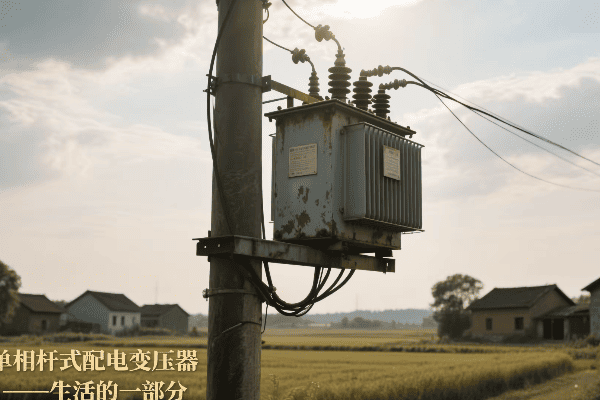
I’ve seen many suburbs grow and change over the years. Here’s how we’re making transformers that can grow and change too:
Modular and Scalable Designs
New transformers can grow with the community:
- Stackable Units: We can add more capacity by stacking compatible units.
- Plug-and-Play Expansions: These let us add features or capacity easily.
- Configurable Outputs: One transformer can provide different voltages as needed.
I worked on a new subdivision where we used stackable transformers. As more homes were built, we simply added modules to increase capacity without replacing the whole unit.
Smart Grid Ready
Modern suburbs need smart power grids. New transformers are ready for this:
| Feature | Benefit |
|---|---|
| Two-Way Power Flow | Supports home solar and battery systems |
| Real-Time Monitoring | Helps prevent outages |
| Remote Control | Allows quick responses to problems |
In a tech-savvy community, we installed smart grid ready transformers. They could handle power from home solar panels and communicate with the utility’s control center.
Electric Vehicle (EV) Charging Support
More people are buying electric cars. Transformers need to be ready:
- High Capacity Models: These can handle the extra load from EV charging.
- Load Balancing Features: These spread out the demand from multiple chargers.
- Time-of-Use Compatibility: This helps manage charging during off-peak hours.
For a suburb with lots of EV owners, we used high capacity transformers with load balancing. This prevented overloads during evening hours when everyone plugged in their cars.
Renewable Energy Integration
Many suburbs are adding solar panels and wind turbines. Transformers need to work with these:
- Bi-Directional Power Flow: This handles power going both ways.
- Voltage Regulation for Intermittent Sources: Keeps power steady when solar or wind output changes.
- Harmonic Filtering: This cleans up the power from renewable sources.
In a "green" suburb project, our transformers could handle the variable output from rooftop solar panels. They kept the power quality high for all users.
Ensuring Reliability and Safety: Advanced Features in Suburban Pole Distribution Transformers?
Suburbs need power that’s always on and always safe. How do new transformers make this happen?
Advanced features in suburban pole distribution transformers significantly enhance reliability and safety. These include smart monitoring systems, improved surge protection, and fail-safe designs that prevent widespread outages and potential hazards.
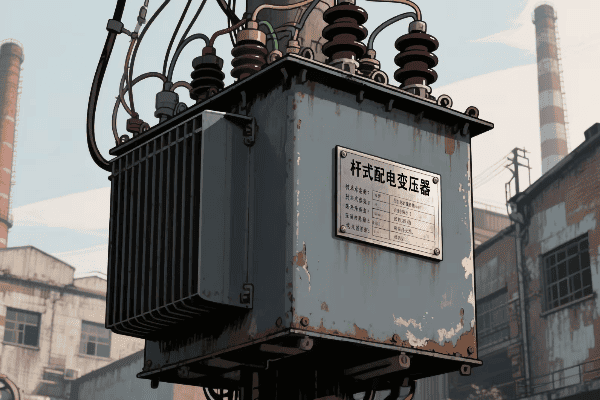
Safety and reliability have always been top priorities in my work. Let’s look at the advanced features making suburban power safer and more dependable:
Smart Monitoring Systems
New transformers can keep an eye on themselves:
- Temperature Sensors: These watch for overheating.
- Load Monitors: These make sure the transformer isn’t working too hard.
- Oil Level Sensors: For oil-filled units, these prevent dangerous leaks.
I once installed a smart monitoring system that caught a developing fault before it could cause an outage. It saved the suburb from a day-long blackout.
Improved Surge Protection
Lightning and power surges can damage transformers. New models are better protected:
| Protection Type | What It Does |
|---|---|
| Arresters | Divert lightning strikes |
| Snubbers | Smooth out small power spikes |
| Faraday Cages | Protect sensitive electronics |
In a area prone to thunderstorms, we used transformers with advanced surge protection. They’ve weathered several major storms without any damage.
Fail-Safe Designs
If something does go wrong, new transformers are designed to fail safely:
- Automatic Disconnects: These cut power if there’s a dangerous fault.
- Fused Links: These isolate problems to prevent widespread outages.
- Pressure Relief Devices: These prevent explosions in extreme cases.
During a severe ice storm, I saw these fail-safe features in action. A damaged transformer safely shut itself down, protecting the neighborhood from potential fires.
Environmental Safety Features
Modern transformers are also safer for the environment:
- Biodegradable Oils: These won’t harm soil or water if they leak.
- Noise Reduction: New designs are much quieter, important in residential areas.
- Fire-Resistant Materials: These reduce the risk and spread of fires.
For a transformer near a nature reserve, we used a model with biodegradable oil and extra noise reduction. It protected both the environment and the peace and quiet of the area.
Smart Maintenance Strategies: Leveraging Technology for Efficient Pole Transformer Management in Suburbs?
Keeping transformers working well is hard. They’re up on poles, often in hard-to-reach places. How can new tech help?
Smart maintenance strategies leverage technology for efficient pole transformer management in suburbs. These include remote monitoring, predictive maintenance algorithms, and drone inspections, all of which help identify and address issues before they cause outages.
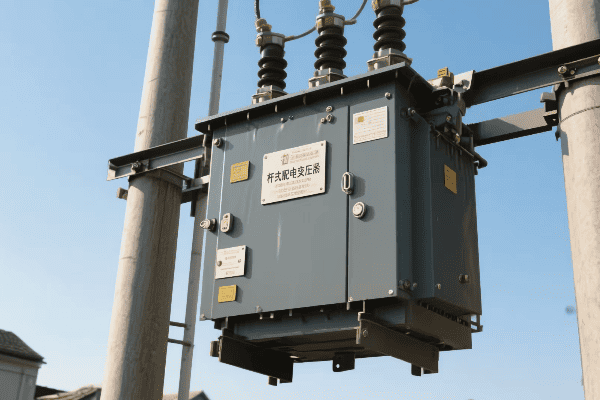
I’ve seen maintenance practices change a lot over the years. Here’s how we’re using tech to keep transformers in top shape:
Remote Monitoring and Diagnostics
We can now keep an eye on transformers from far away:
- Real-Time Data Collection: This shows us how the transformer is working right now.
- Trend Analysis: This helps us spot problems before they get big.
- Alerts and Notifications: These tell us right away if something’s wrong.
I set up a remote monitoring system for a suburban network. Within the first month, it caught two developing issues that could have led to outages.
Predictive Maintenance Algorithms
Smart software can predict when a transformer might need help:
| Data Point | What It Tells Us |
|---|---|
| Load History | If the transformer is being overworked |
| Temperature Patterns | If cooling isn’t working well |
| Oil Analysis | The overall health of the transformer |
We used predictive maintenance on a group of older transformers. The system helped us prioritize which ones to replace, saving money and preventing failures.
Drone Inspections
Drones make it easier and safer to check transformers:
- Visual Inspections: Drones can get close-up views without sending people up poles.
- Thermal Imaging: This shows hot spots that might mean trouble.
- Corona Detection: Special cameras can see electrical discharges that are signs of problems.
I introduced drone inspections in a suburb with lots of trees. We found several transformers with heat issues that were hidden by foliage. Fixing these prevented several potential outages.
Mobile Apps for Field Technicians
When people do need to work on transformers, mobile apps help a lot:
- Augmented Reality Guides: These show techs how to fix specific problems.
- Digital Manuals: All the info techs need, right on their phones or tablets.
- Real-Time Collaboration: Techs can get help from experts back at the office.
We gave our maintenance team tablets with a new app. It cut repair times by 30% and reduced errors significantly.
Conclusion
Pole distribution transformers are crucial for efficient, reliable, and aesthetically pleasing power delivery in suburbs. They combine innovative design, smart technology, and advanced safety features to meet the evolving needs of growing communities.
Free CHBEB Transformer Catalog Download
Get the full range of CHBEB transformers in one catalog.
Includes oil-immersed, dry-type, pad-mounted, and custom solutions.
Quick Message
Request A free quote
We'd like to work with you
- +86 15558785111
- [email protected]
- +86 15558785111
What We Do
CHINA BEI ER BIAN (CHBEB) GROUP, with 218 million in registered capital, originated from Beijing Beierbian Transformer Group. Headquartered in Beijing for R&D, it operates major production bases in Nanjing and Yueqing, producing high-quality products.
Latest Product
address
BeiJing
No 3,RongJing East Road,BeiJing Economic Technological Development Area,BeiJing,China
JiangSu
No 7️Xiangfeng Road,Jiangning,NanJing,JiangSu,China
WenZhou
No.211, Wei 16 Road, Industrial Zone, Yueqing, Wenzhou, Zhejiang, China.
XiangYang Industrial Zone ,YueQing,WenZhou,ZheJiang,China
contact us
- [email protected]
- +86 13057780111
- +86 13057780111
- +86 15558785111
Copyright © Bei Er Bian Group


